What tells you that a backlink is worth chasing or not?
Guesswork won’t do it. You need the exact link building metrics to find relevant, high-quality backlinks.
In this post, I have explained the link-building metrics that matter and how to measure them.
But before we get to that, let’s talk a little about…
What Are Link Building Metrics?
Link building metrics tell you the real story behind your backlink profile. They help you see not just how many links you earn, but how valuable they are to your site’s performance. There are two main types of metrics: quantitative and qualitative.
Quantitative metrics give you raw numbers, such as the total count of backlinks and the number of unique domains that link to your site. However, these figures only tell part of the story.
Qualitative metrics, like the quality and topical relevance of those links, show you which links truly help improve your rankings. For example, tools like SEMrush evaluate toxicity to help identify harmful backlinks that could hurt your site.
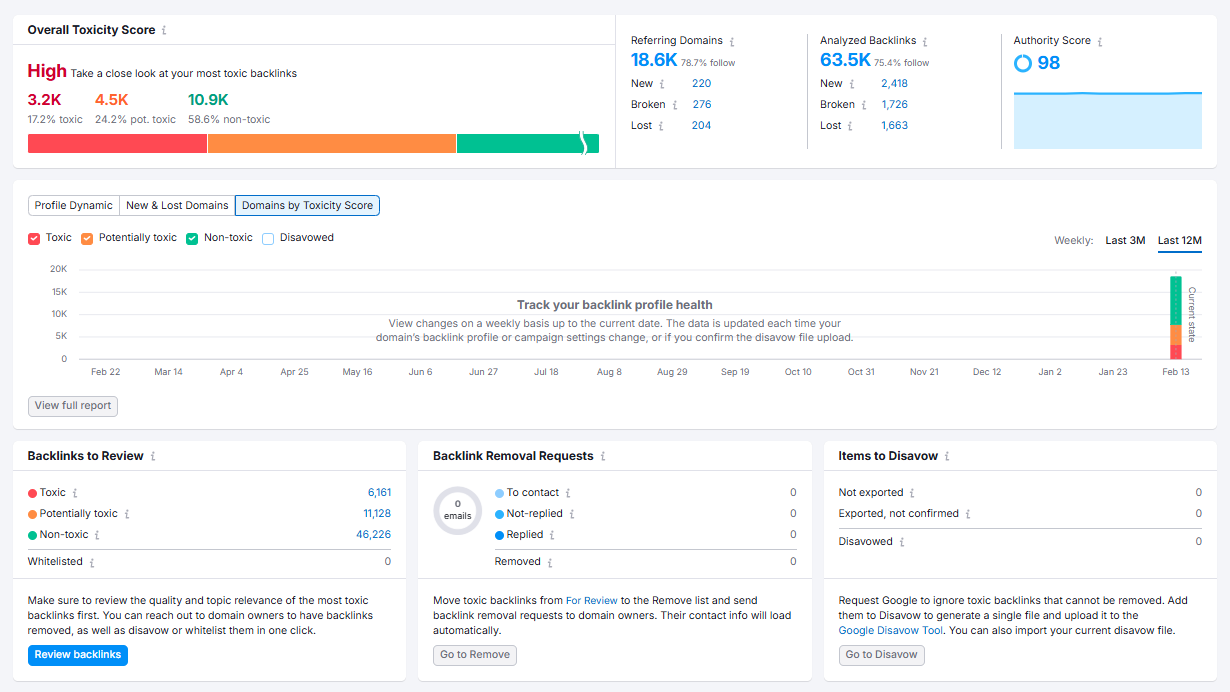
Another qualitative metric is the placement of a link on a page, which can significantly affect its value.
Understanding these nuances is important to create a well-rounded linkbuilding strategy that yields tangible outcomes and protects your site from penalties.
Link Building Metrics You Should Track
1. Domain-Level Metrics
One key metric is Domain Authority, a score that predicts how likely your website is to rank on search engine results pages. The higher the DA, the stronger the site appears in search results. While DA is only a predictive tool, it helps you compare your site with competitors and see where it stands.
When you get a backlink, check the referring domain’s Authority Score in SEMrush Domain Overview. This ranges from 0 to 100 and gives you an idea of how authoritative a website is.
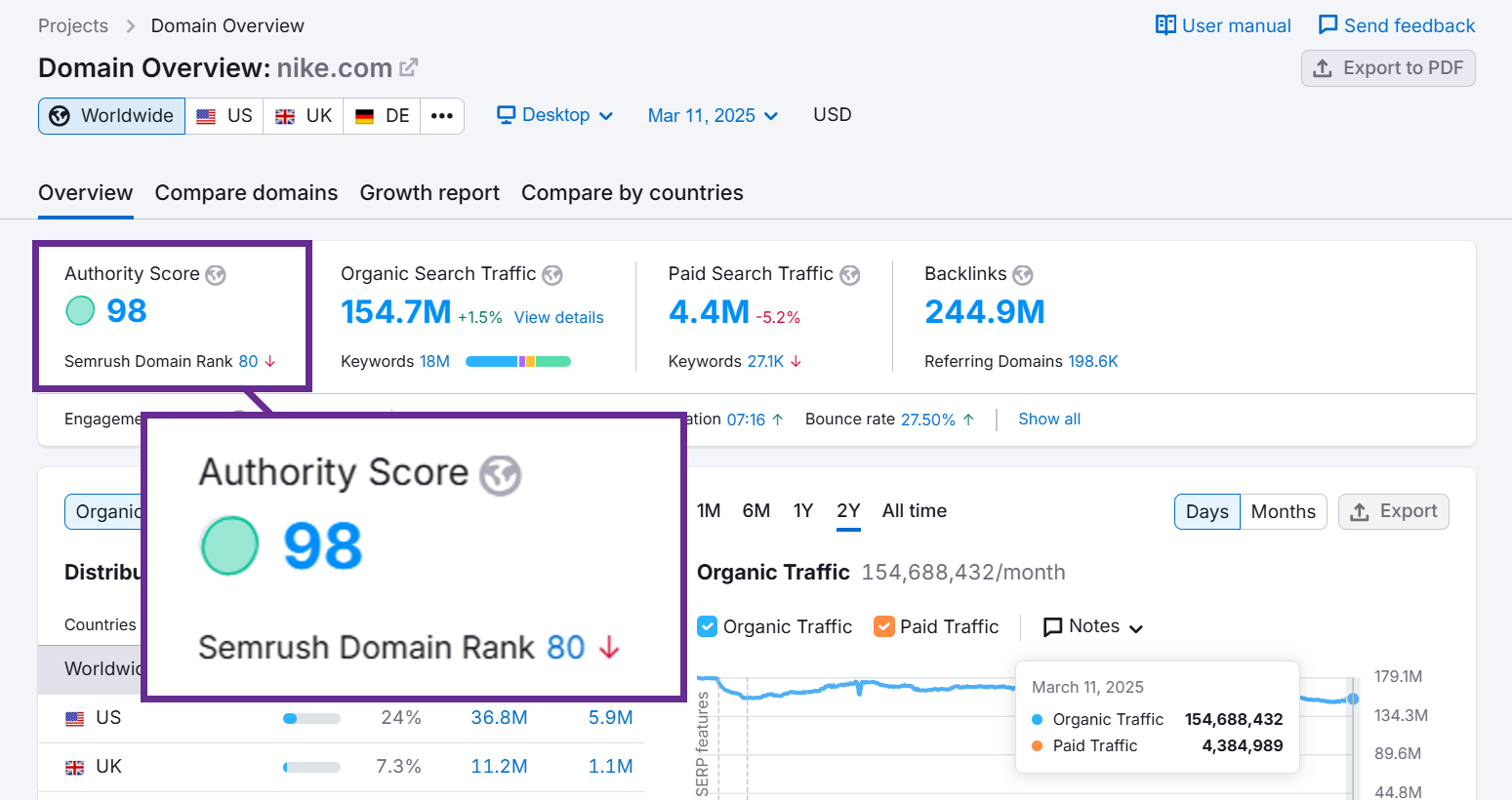
Semrush’s gives this Authority Score based stuff like backlink profile, organic traffic, and spam signals.
If you get a backlink from a website with an Authority Score above 50, it’s generally good.
For example, if you want to reach out to industry blogs or major publications, look for scores in the 50s or higher.
If it falls below 40, it’s not bad, but it’s not great. If a link can get you enough niche traffic, it’s still worth it.
2. Page-Level Metrics
Every page on your site has its own chance to rank high. You can use metrics like Page Authority (PA) and URL Rating (UR) to understand which pages are likely to perform best.
Look for pages with a UR between 50–70. These pages give your site strong SEO value. Before building a link, I always use SEMrush to check the referring page’s UR.
If the rating is low, the quality of backlink will be affected as well.
3. Quantity Versus Quality
While you obviously want to scale your backlinks, don’t just focus on getting as many backlinks as possible. You only want to chase high-quality backlinks. But how do you check a backlink’s quality?
There are a few things to look out for:
↳ High Authority Referring Domains: You don’t want to backlinks from domains with very low authority. A single backlink from a high-authority domain is a thousand times better than a bunch of low-DR backlinks.

↳ Varying, Natural Anchor Texts: If you find that you’re getting a lot of backlink with highly-optimized anchor texts, it’s a red flag. Make sure the anchor text accurately reflects the content of your page that’s linking to. You want a diverse anchor text that includes your brand name, generic terms like “click here,” and so on.
↳ Contextually Placed Link: You don’t want backlinks from footers, sidebars or comment sections. These backlinks not only have low SEO value but your target audience is less likely to click on a link at such places.
↳ Referral Traffic and Visitor Behaviour: Backlink’s only purpose isn’t to add SEO value to your website but also expose your content to a wider relevant audience. If you’re not getting a healthy amount of traffic from a backlink or the visitors coming from it quickly bounce back, it means you’re not targeting the right audience.
4. Follow Versus Nofollow
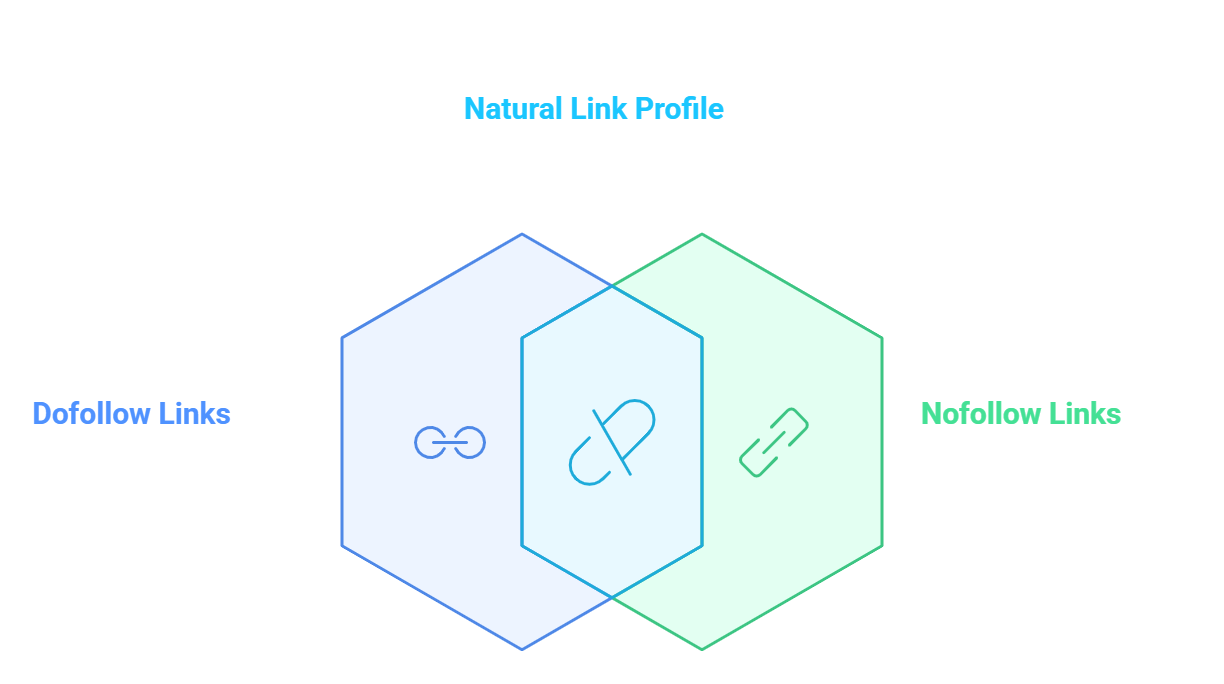
Backlinks come in two forms: dofollow and nofollow. In simple words, Dofollow affects your rankings, while nofollow links don’t affect your rankings directly. But you should not overlook nofollow links as they can still bring you referral traffic and help you create a natural link profile.
At the same time, you also don’t want to have a profile with many clearly low-quality and suspicious nofollow links.
You want a mix of both types. Don’t rely exclusively on dofollow links, as it can make Google suspicious.
5. Brand Mentions and Sentiment
Even unlinked brand mentions can improve your perceived authority. Monitor these mentions too, even the ones you fail to turn into backlinks. Make sure that your brand appears consistently in relevant contexts on the web.
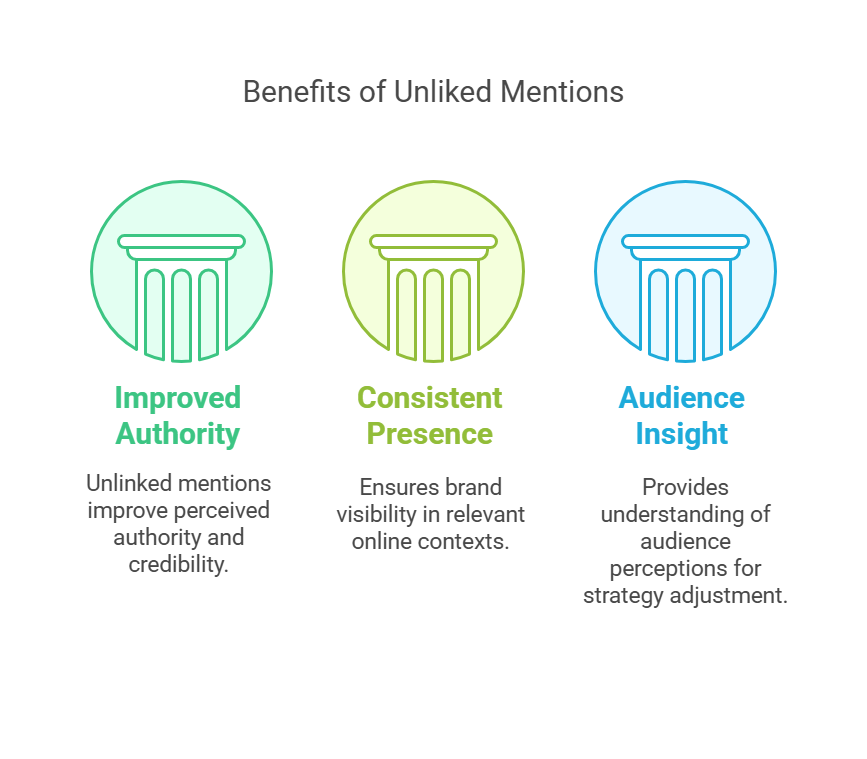
It also helps you understand how your audience perceives your brand so you can adjust your content strategy accordingly.
There are many backlink monitoring tools that can help you find unlinked mentions.
How to Improve Your Backlink Metrics?
↳ Publish content people naturally link to: Write detailed guides, research-backed articles, or original case studies. Valuable content attracts quality backlinks organically.
↳ Do personalized outreach: Reach out individually to industry blogs and influencers in your niche. Clearly explain how linking to your content benefits their readers. This will help you score backlink placement that is the most contextually relevant to your content.
↳ Remove toxic backlinks regularly: Use tools like SEMrush to find harmful links.
Open Semrush’s Backlink Audit Tool, enter your domain and click Start Backlink Audit.

Check out the Toxic and Potentially toxic backlinks to see which links are harming your backlink profile and where they are coming from.

Click Audit to review and remove problematic links.
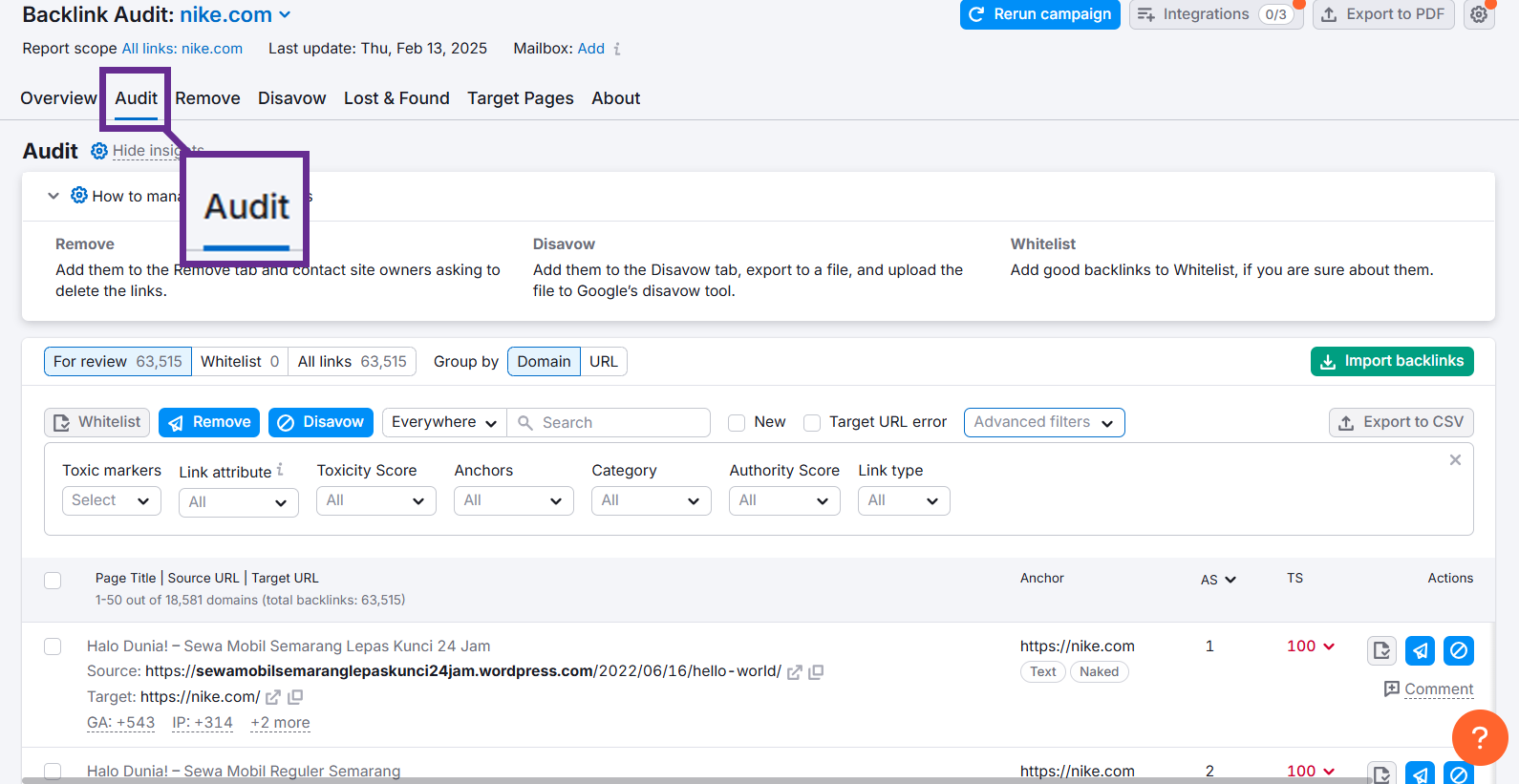
Select the links you want to Whitelist, Remove, or Disavow and take action accordingly.
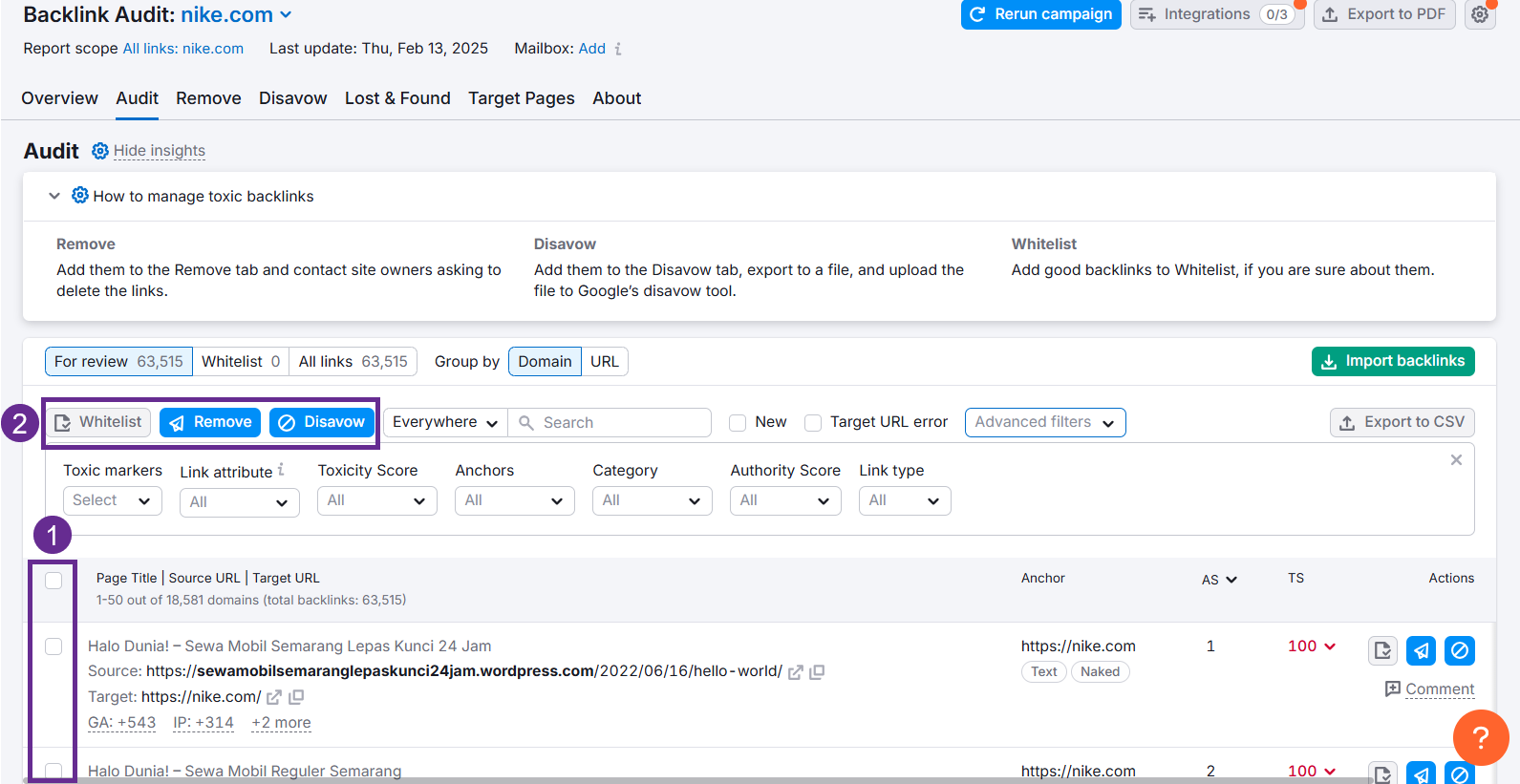
When you find suspicious or toxic backlinks, disavow them through Google’s Disavow Tool.
To effectively audit you backlink profile, check out this free template.
↳ Focus on quality link placements: Focus your link-building efforts on websites with good Domain Authority (DA) or URL Rating (UR). Backlinks from higher-quality sites give your pages stronger SEO value. Learn more checking backlink quality.
↳ Monitor backlink growth rate regularly: Aim for steady, natural backlink growth of about 5–10% per month. Make sure there are no sudden spikes because Google finds them unnatural and can flag your website.
Track Backlink Metrics to Keep a Healthy Backlink Profile
Review your current backlink profile using these metrics to weed out bad links and maintain a health profile. Audit your backlinks frequently to make sure you only have high-quality backlinks that bring positive SEO value and relevant referral traffic to your website.
Here are some guides to help you improve grow your backlink profile:
↳ Best strategies for building ecommerce backlinks
↳ International link building strategies
Frequently Asked Questions
Tier 1 backlinks link directly to your website from reputable sources. Tier 2 backlinks link to your tier 1 sources, boosting their strength indirectly. Tier 3 backlinks point to tier 2 links, generally lower-quality, serving only to amplify tier 2 backlinks and add SEO momentum indirectly.
A good backlink score usually means having a Domain Authority (DA) or Authority Score of 50 or higher. Scores above 60 indicate a very strong backlink profile, making your site more trustworthy. Scores below 40 suggest moderate quality, still valuable if highly relevant.
Use tools like SEMrush or Ahrefs to analyze backlink profiles. Check total backlinks, unique referring domains, domain and page-level authority, anchor text diversity, and link type (dofollow/nofollow). Evaluate quality by spotting unnatural patterns, spammy sources, or suspicious anchor texts and placements.
Backlink gap analysis identifies links competitors have that you don’t. Enter your domain and competitors’ domains in Ahrefs or SEMrush’s “Backlink Gap” tool. It reveals missed opportunities so you can target these linking domains, close gaps, and strengthen your link profile effectively.
To index backlinks faster, submit the URLs directly via Google Search Console’s URL Inspection tool, or request indexing through “Inspect URL.” Sharing the link on active social platforms can also help crawlers discover and index backlinks more quickly, improving link recognition by Google.
A toxic score measures the likelihood a backlink harms your site. Tools like SEMrush assign a toxicity score (0-100) to backlinks—scores above 60 indicate harmful links. High-toxicity backlinks signal spam, manipulation, or unnatural linking, requiring urgent removal or disavowal to protect rankings.
Evaluate backlink quality by checking domain authority, relevance to your content, anchor text variety, link placement (preferably contextual), referral traffic generated, and low toxicity scores. Ideal backlinks come from authoritative, relevant sites that deliver consistent, quality visitors without spam signals or unnatural linking patterns.
Avoid backlinks from spammy sites, irrelevant niches, PBNs (Private Blog Networks), comment spam, directories unrelated to your industry, footer/sidebar links, or links with unnatural, keyword-rich anchors. Also, steer clear of paid links, link farms, and sites flagged with high toxicity scores.
Audit backlinks using SEMrush or Ahrefs, identifying harmful or toxic links. Manually contact site owners requesting removal of harmful links. If unresponsive, disavow toxic backlinks through Google’s Disavow Tool. Regularly monitor your backlink profile to maintain a healthy, clean link profile long-term.
Editorial backlinks from authoritative, highly trusted websites within your niche—like leading industry blogs, news websites, or educational/government domains—are most powerful. These links significantly boost site credibility, authority, rankings, and organic traffic, providing substantial long-term SEO value far beyond average backlinks.

